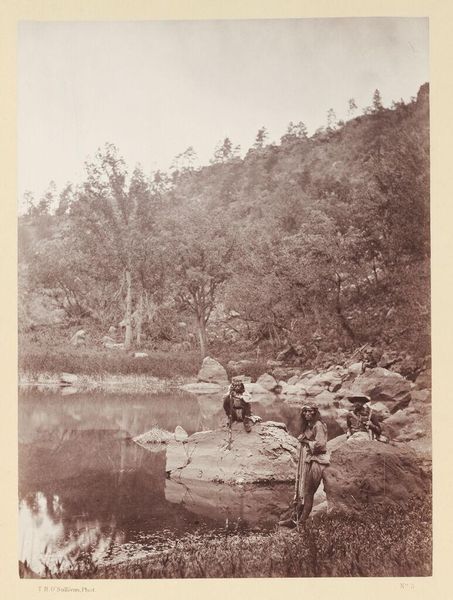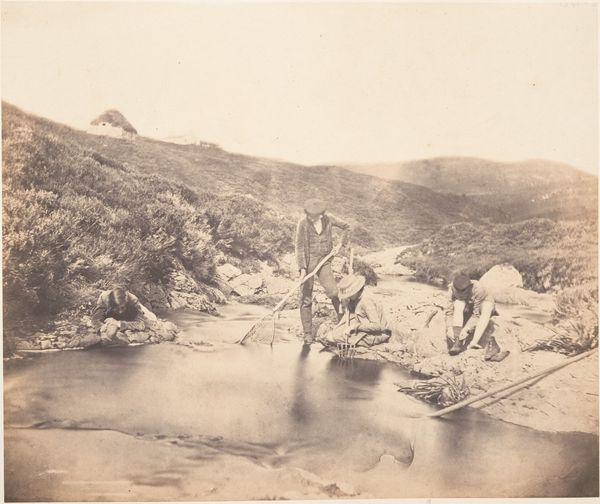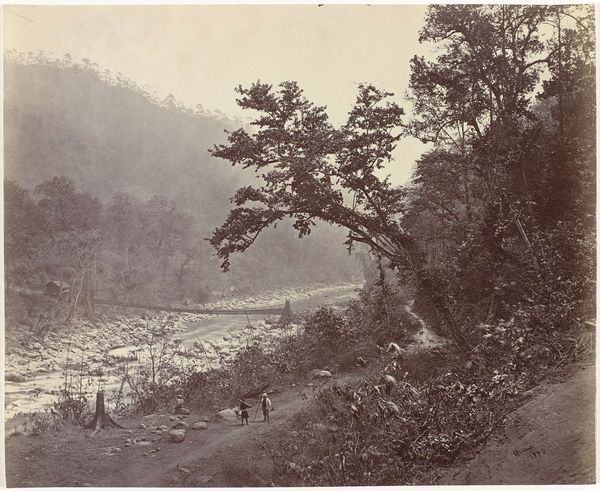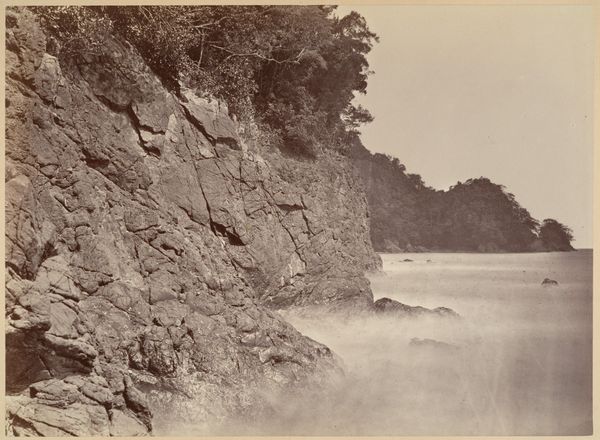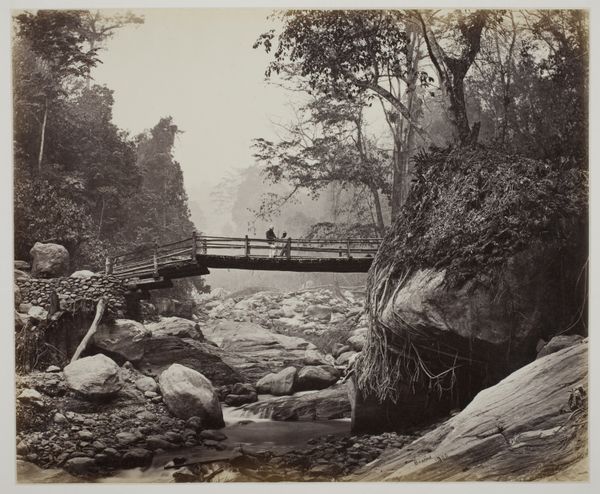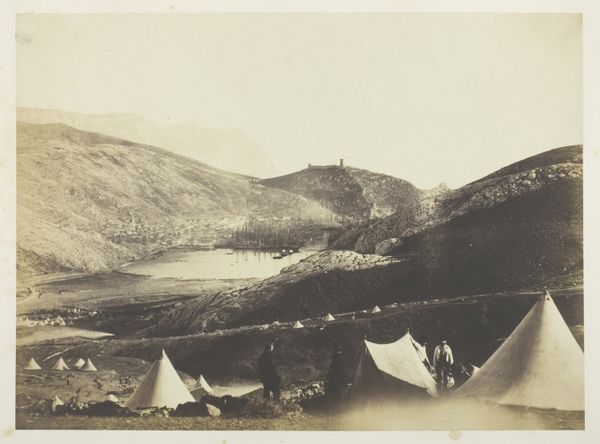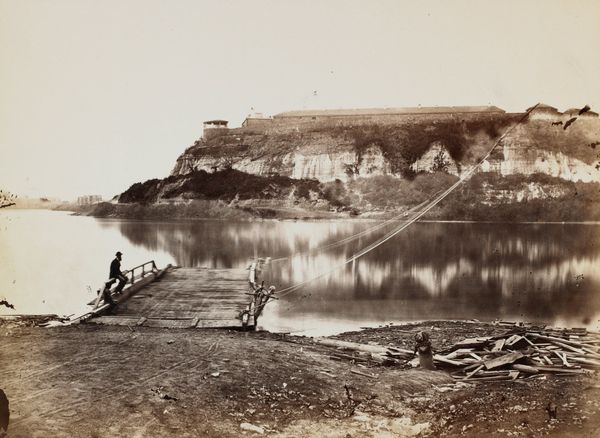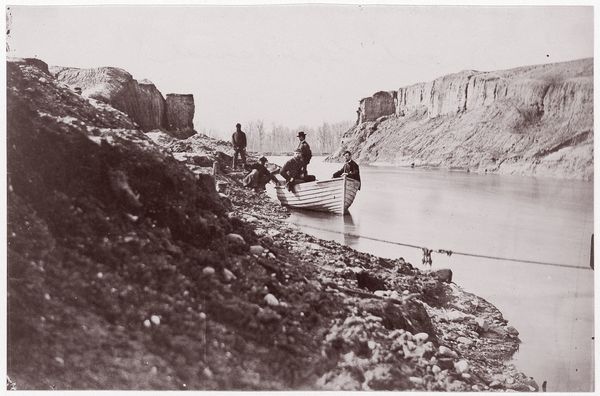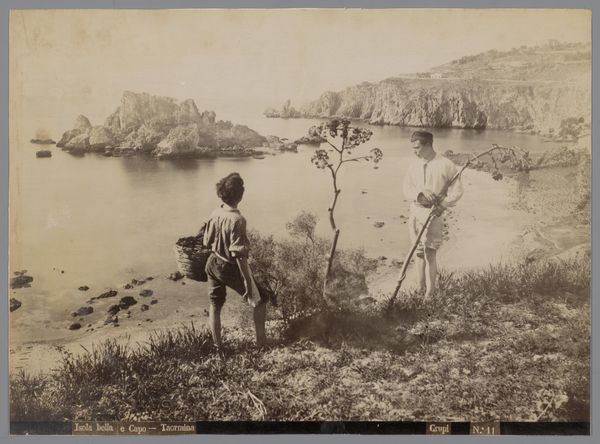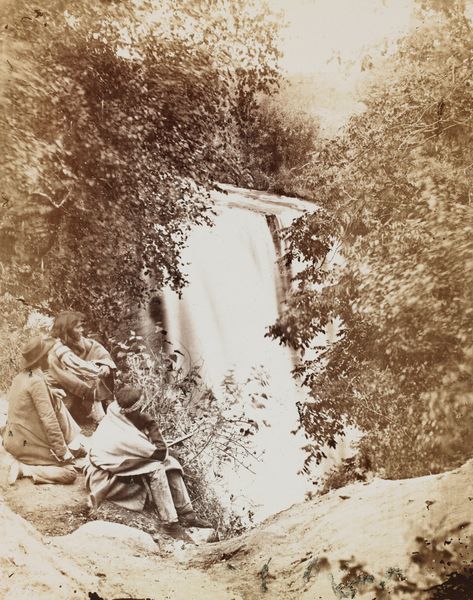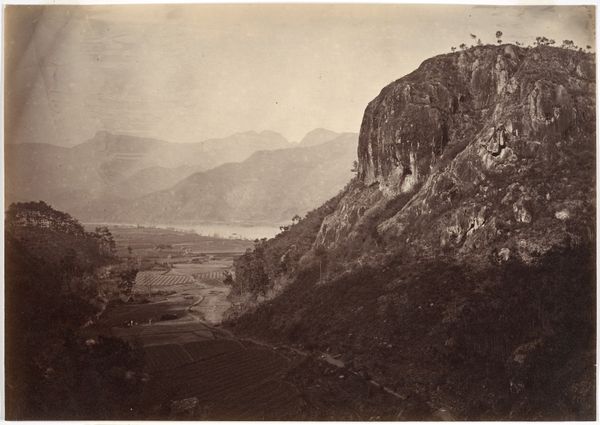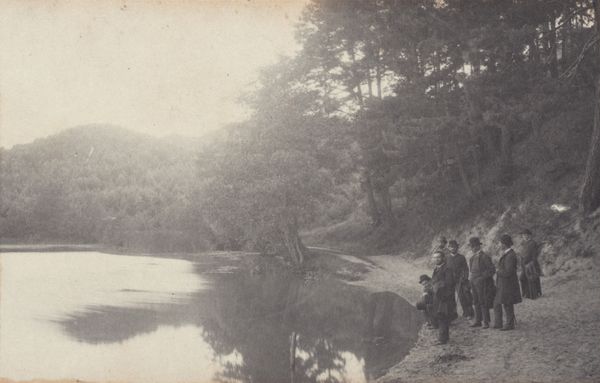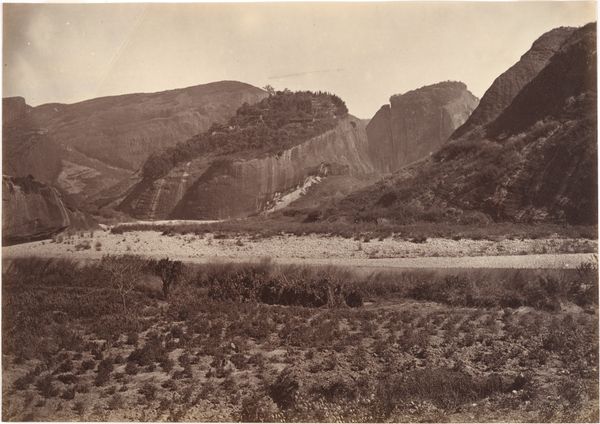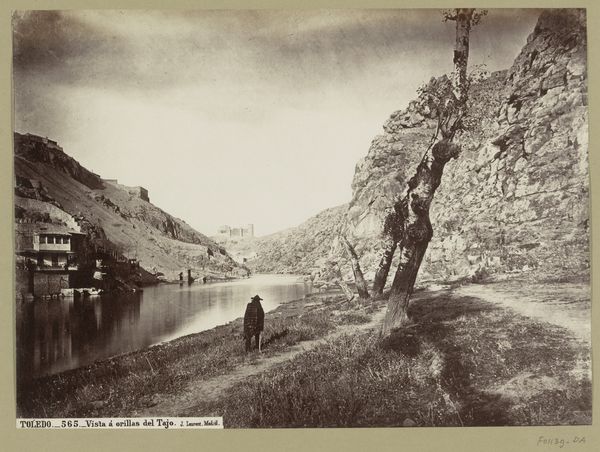![[Group Portrait near Fangguangyan Monastery, Fujian] by Lai Fong](/_next/image?url=https%3A%2F%2Fd2w8kbdekdi1gv.cloudfront.net%2FeyJidWNrZXQiOiAiYXJ0ZXJhLWltYWdlcy1idWNrZXQiLCAia2V5IjogImFydHdvcmtzL2NhNTE2OThmLWZmZDEtNDhkZS1hNzljLTE0MTFiNmY0NmRiZi9jYTUxNjk4Zi1mZmQxLTQ4ZGUtYTc5Yy0xNDExYjZmNDZkYmZfZnVsbC5qcGciLCAiZWRpdHMiOiB7InJlc2l6ZSI6IHsid2lkdGgiOiAxOTIwLCAiaGVpZ2h0IjogMTkyMCwgImZpdCI6ICJpbnNpZGUifX19&w=3840&q=75)
photography, albumen-print
#
portrait
#
16_19th-century
#
landscape
#
river
#
outdoor photography
#
photography
#
group-portraits
#
men
#
genre-painting
#
albumen-print
#
realism
Dimensions: Image: 7 3/16 × 9 1/2 in. (18.2 × 24.1 cm)
Copyright: Public Domain
Curator: Lai Fong, a photographer active in China during the late Qing Dynasty, created this albumen print, titled "[Group Portrait near Fangguangyan Monastery, Fujian]" in 1869. Editor: There's a definite contrast here, between the natural beauty and the formality of the group. It's picturesque but feels somewhat staged, as if capturing a particular vision of colonial leisure. Curator: Indeed. Fong operated a successful studio in Hong Kong, catering primarily to Western clients. These kinds of group portraits, often depicting landscapes or architectural sites, served as mementos and representations of their travels and experiences. Editor: What strikes me is how the composition places these figures within a Chinese landscape, yet their dress and posture firmly declare their foreignness. It really speaks to the colonial gaze and the desire to possess these views. You almost wonder what local perspectives were entirely absent from this narrative. Curator: Precisely. And think about the materiality itself, the albumen print. It was the dominant form of photographic printing at that time, prized for its detail and tonality. In China, photographers such as Fong, and others were able to utilize their photographic techniques that aligned with their sitter's desired outcomes, catering to a Western market hungry for exotic, yet controlled, depictions of the East. Editor: This image acts as a record and constructs a visual hierarchy. Notice how the individual in the front lies reclined casually and is positioned slightly apart. Perhaps even to imply who held more importance to be centered near the camera? There's also an underlying sense of privilege encoded in the photograph's very existence and composition. Curator: Considering the wider context in terms of genre painting as a visual motif may show insight. Fong would have probably have drawn inspirations from them in order to represent genre scenes depicting social activities in landscapes. It can act as an element which reveals aspects of cultural encounter in visual formats that reflect back to its audience Editor: Thank you. Viewing this image is to become aware of the multifaceted dynamic within photography and portraiture during that era of history. It invites viewers to confront both its visual appeal and to examine its implied narrative, it becomes critical.
Comments
No comments
Be the first to comment and join the conversation on the ultimate creative platform.
